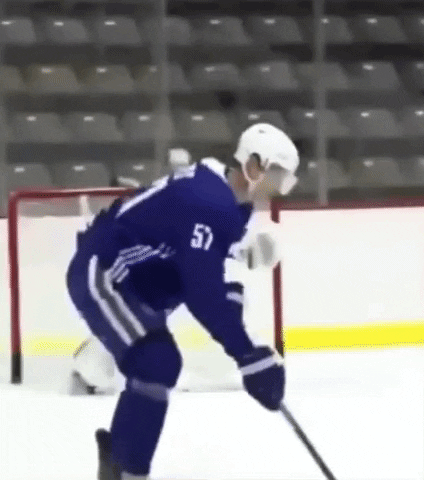Shooting: How to Add Power to Your Hockey Shot
Downforce > Sweeping
When learning how to play hockey, most younger players are first introduced to the wrist shot. Given the lack of strength of young players, this makes full sense as they’re most stable in that position and can activate more muscles.
But there are issues with this shot that come to light as players grow and increase their abilities.
Sweeping Motion
The wrist shot is a sweeping motion on a transverse plane where players are taught to point the toe of their stick to the part of the net they want the puck to go toward.
Often leads to poor body shape and inside-edge dominant shooting, particularly when players attempt to lift the puck. Players often find themselves off balance while being stuck where they have to move in order to move. You’ll often see players ‘falling off’ (ie., trailing away from) the puck, as their momentum carries them away from their target. This is less than ideal both from a safety and performance standpoint.
Transverse = Core rotation
Frontal = Toes vs heels
Sagittal = Left or right side
Downforce Driven
As players evolve, they are introduced to more types of shots, such as the snap or drag shots. These shots still utilize a transverse plane, while adding a large dose of frontal and sagittal planes.
Rather than pointing their stick’s toe to the target, players drive through the ice and puck. The curve of the blade does the work to guide the shot’s location.
As we can see, the motion/weight transfer is downward into the ice. Want to add more power? Focus on pushing down into the ice instead of sweeping on top of the ice.
If you’re coaching, particularly at the younger ages, should you even teach the wrist shot technique? Let us know your thoughts.
Check out our entire shooting technique posts:
Did you enjoy this newsletter?
Help us spread the ideas within and share them with the people you care about



